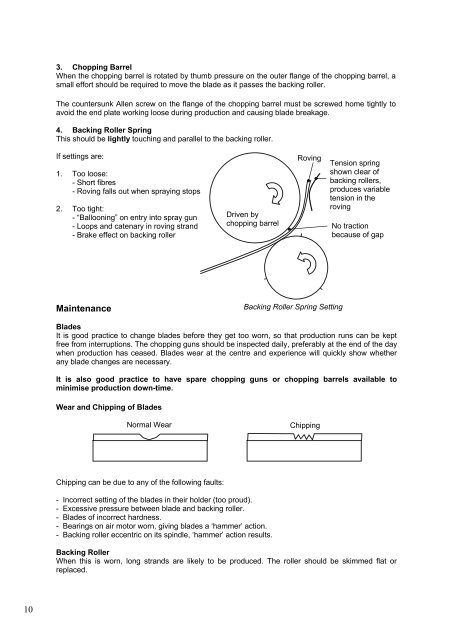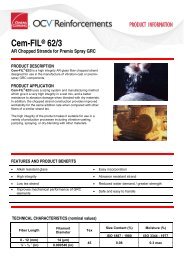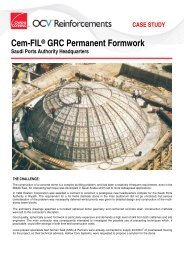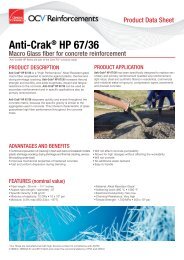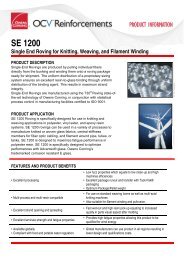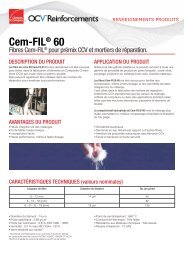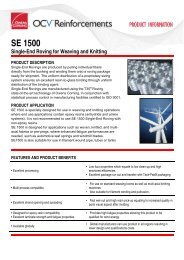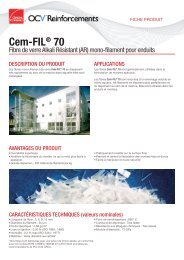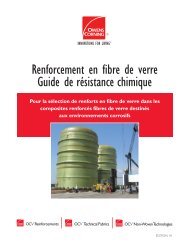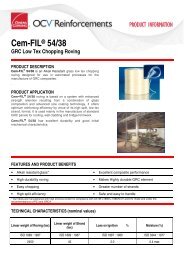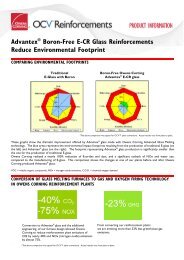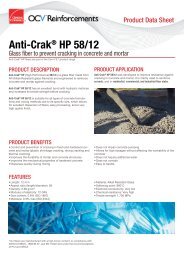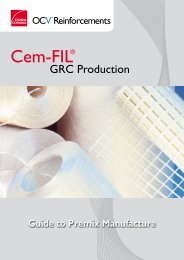GRC Production - OCV Reinforcements
GRC Production - OCV Reinforcements
GRC Production - OCV Reinforcements
You also want an ePaper? Increase the reach of your titles
YUMPU automatically turns print PDFs into web optimized ePapers that Google loves.
3. Chopping Barrel<br />
When the chopping barrel is rotated by thumb pressure on the outer flange of the chopping barrel, a<br />
small effort should be required to move the blade as it passes the backing roller.<br />
The countersunk Allen screw on the flange of the chopping barrel must be screwed home tightly to<br />
avoid the end plate working loose during production and causing blade breakage.<br />
4. Backing Roller Spring<br />
This should be lightly touching and parallel to the backing roller.<br />
If settings are:<br />
1. Too loose:<br />
- Short fibres<br />
- Roving falls out when spraying stops<br />
2. Too tight:<br />
- “Ballooning” on entry into spray gun<br />
- Loops and catenary in roving strand<br />
- Brake effect on backing roller<br />
Backing Roller<br />
Driven by<br />
chopping barrel<br />
Roving<br />
Tension spring<br />
shown clear of<br />
backing rollers,<br />
produces variable<br />
tension in the<br />
roving<br />
No traction<br />
because of gap<br />
Driver<br />
Chopping barrel<br />
Maintenance<br />
Backing Roller Spring Setting<br />
Blades<br />
It is good practice to change blades before they get too worn, so that production runs can be kept<br />
free from interruptions. The chopping guns should be inspected daily, preferably at the end of the day<br />
when production has ceased. Blades wear at the centre and experience will quickly show whether<br />
any blade changes are necessary.<br />
It is also good practice to have spare chopping guns or chopping barrels available to<br />
minimise production down-time.<br />
Wear and Chipping of Blades<br />
Normal Wear<br />
Chipping<br />
Chipping can be due to any of the following faults:<br />
- Incorrect setting of the blades in their holder (too proud).<br />
- Excessive pressure between blade and backing roller.<br />
- Blades of incorrect hardness.<br />
- Bearings on air motor worn, giving blades a ‘hammer’ action.<br />
- Backing roller eccentric on its spindle, ‘hammer’ action results.<br />
Backing Roller<br />
When this is worn, long strands are likely to be produced. The roller should be skimmed flat or<br />
replaced.<br />
10<br />
8


